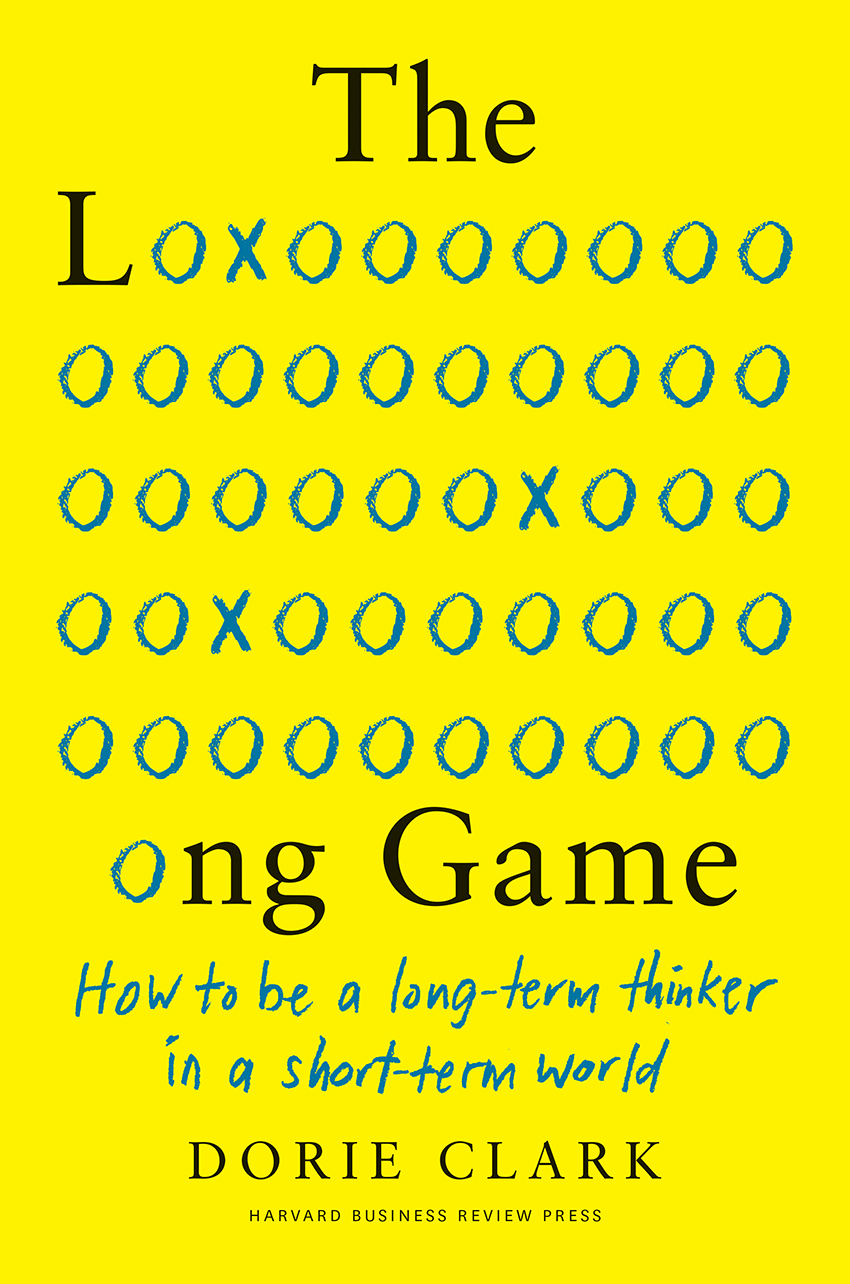By Ray Bert
The Long Game: How to Be a Long-Term Thinker in a Short-Term World, by Dorie Clark. Boston: Harvard Business Review Press, 2021; 256 pages, $28.
In response to the COVID-19 pandemic turning daily life upside down, some people made big changes, while others did their best to hang on to as much normalcy as possible. Regardless of which camp you fell into, chances are that you gave additional thought to what all of it meant long term. What author Dorie Clark would likely ask you to consider, though, is this: Did you merely muse on that briefly (guilty!), or did you take the opportunity to adopt long-term thinking as a habit?
What Clark would not do, however, is pretend that comes easily for everyone. In The Long Game, she breaks down how to think long term, which she defines specifically as “eschewing short-term gratification in order to work toward an uncertain but worthy future goal.” If her very definition doesn’t give away that this isn’t for everyone, she adds that her book is for “professionals who want something more out of their lives and work, and who are willing to take the harder path to get there.”
Clark breaks down her approach into three key parts. The first, which she calls “White Space,” centers on giving yourself the time you need to think long term rather than filling your time scurrying down your to-do list putting out short-term fires, leaving no time for anything else. Her key takeaway here is that for many of us, consciously or not, we are choosing to be “too busy.” And, therefore, the opportunity exists for us to choose to not be too busy as well.
Part two is dubbed “Focus Where It Counts” — a logical next step. Because what good is expending the effort to free yourself up timewise only to squander that time on things that might not be right for you? Deliberately setting aside time for new ideas and projects — such as Google’s highly publicized practice of allowing employees 20% of their time to essentially do individual research and development — is central here, as is sussing out how that time can be spent strategically on your specific goals.
The final section, one that Clark calls the hardest part, is “Keeping the Faith.” Setbacks, stalls, and outright defeats are all but inevitable, and plowing ahead with perseverance is essential for success. In this area, she explains how to practice “strategic patience” and ensure that you are learning from setbacks so that they actually help you toward your ultimate goals.

Clark’s rich and varied background — college graduate at 18, award-winning journalist, presidential campaign adviser, documentary filmmaker, and more — uniquely positions her to advise people on how to accomplish anything they want. A frequent speaker and consultant on business, communications, and branding topics, she also teaches executive education at the Duke University and Columbia University business schools and has written previous books on self-reinvention and entrepreneurship.
As with any strategy or self-improvement book, what readers ultimately get out of The Long Game will depend on whether the author’s voice and viewpoint resonate and how persistently they remember and apply what they’ve read and learned. Clark holds up her end with her relentless optimism, clearly expressed ideas devoid of too-clever-by-half buzzword coinages, and examples drawn from her own demonstrated successes (and failures). Your move.



